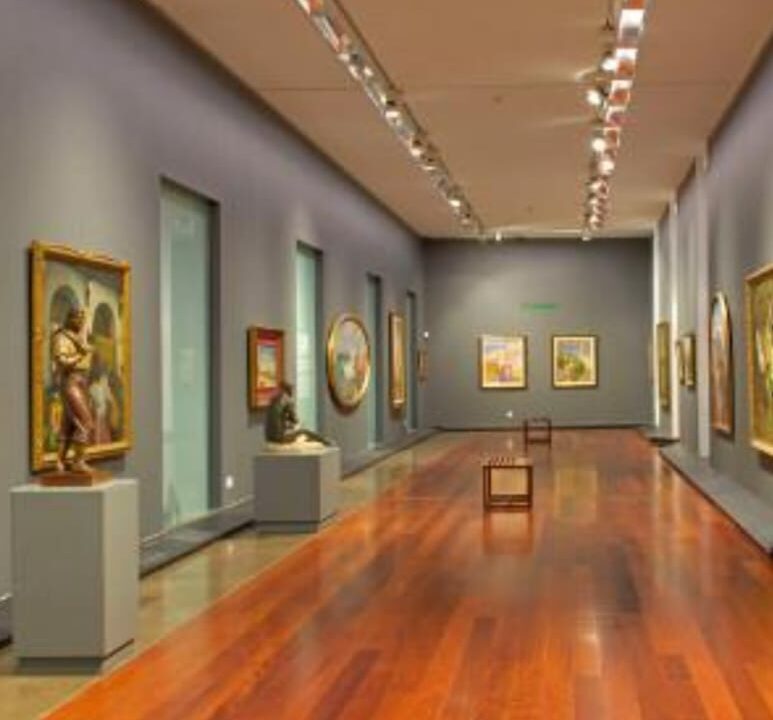
The Gravina Museum of Fine Arts (MUBAG) is one of the most important cultural attractions of the city of Alicante. This museum is located in the historic 18th century Gravina Palace, from which it takes its name. MUBAG attracts attention not only for its rich art collection, but also for its unique atmosphere, which allows visitors to immerse themselves in the world of Spanish painting from the 18th and 19th centuries.
The uniqueness of MUBAG
The main feature of MUBAG is its emphasis on regional artists and Spanish art, which makes the museum a unique showcase of the cultural heritage of the province of Alicante. Its collection includes works by masters such as Lorenzo Casanovas, Antonio Gisbert and Joaquin Sorolla. The museum’s exhibition focuses on the period when Spanish art was at its height, which not only allows you to trace the development of fine art in Spain, but also to see how the artists of the Alicante region fitted in with the European trends of the time.
MUBAG also regularly organises temporary exhibitions that draw attention to different aspects of Spanish and international culture and art. These exhibitions help to make the museum an important centre of cultural life in the city and the region, and broaden the horizons for locals and tourists alike.
History of the museum and its building
The building that houses MUBAG is itself an important historical site. TheGravina Palace was built in the 18th century and is a prime example of the architecture of the time. Its rich history and splendid architecture provide the ideal setting for the display of classical art. The interior of the palace has been meticulously restored and adapted for museum purposes, while retaining the original elements of the building, which gives the museum a special charm.
MUBAG opened its doors to the public in 2001 and has since become one of the most visited museums in the region. Its mission is to preserve and promote the artistic heritage of the province of Alicante and the whole of Spain. Thanks to a wide range of educational programmes and guided tours, the museum actively attracts different groups of visitors, from schoolchildren to art historians.
Main exhibitions
The MUBAG collection covers more than two centuries of Spanish painting. One of the most significant parts of the exhibition is the collection of works by artists born in or closely associated with the province of Alicante. This allows visitors to see how regional masters such as Antonio Gisbert and Lorenzo Casanovas developed their art in the context of national and international trends.
Particular attention is paid to academic painting, characteristic of the 19th century. Paintings from this period were characterised by realism, attention to detail and the depiction of historical and religious subjects. These works provide a better understanding of Spanish society at the time and its cultural and artistic values.
Educational programmes and cultural role
MUBAG also plays an important role in the educational sphere. The museum actively carries out various activities and programmes to promote art among different age groups. Master classes, lectures, seminars and excursions are regularly organised, which helps to develop an interest in the visual arts among the younger generation.
In this way, MUBAG does not just store and display works of art, but also actively involves the public in cultural processes, creating a vibrant and dynamic cultural centre in Alicante.
Conclusion
The Gravina Museum of Fine Arts (MUBAG) is a unique place that combines the historical value of the building with the richness of the art collection. Its emphasis on Spanish artists, especially masters from the Alicante region, makes it an important cultural institution not only for the city but for the whole country. MUBAG is not just a museum, it is a place where the art of the past meets modernity, inspiring and educating new visitors.

